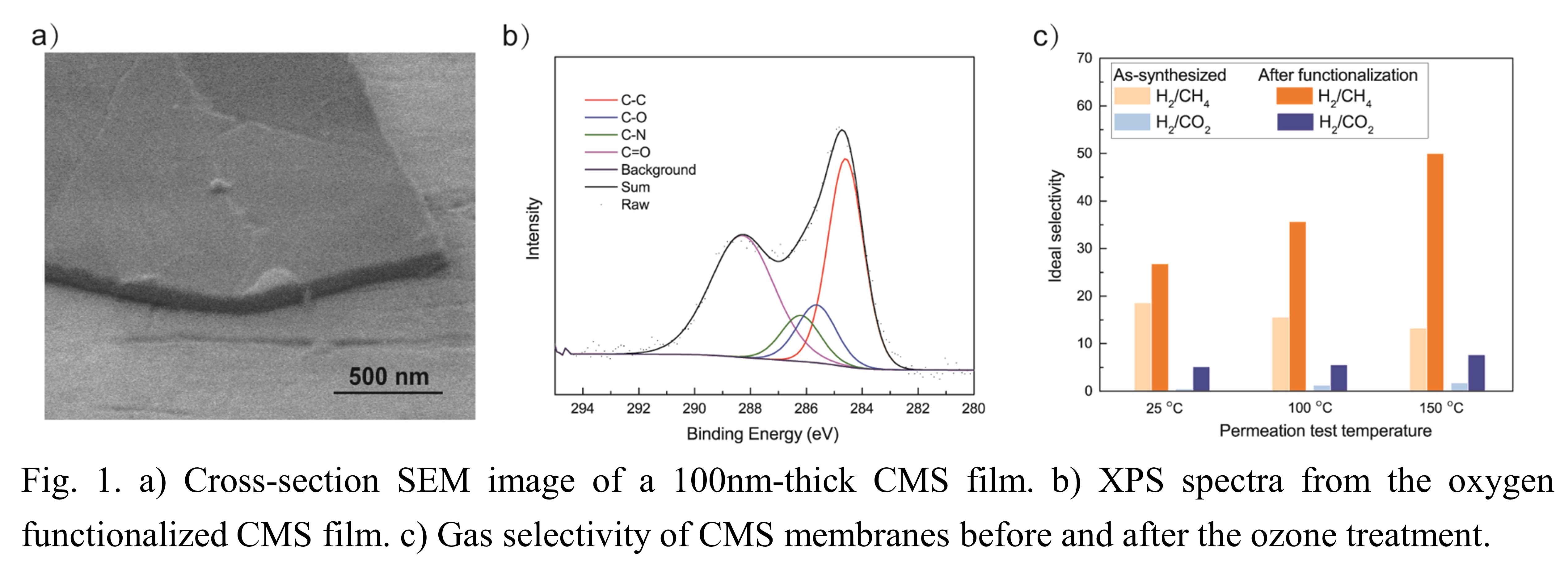(660d) Ultrathin Gas-Sieving Carbon Molecular Sieve Membranes with Modulated Pore-Size Distribution By Room-Temperature Functionalization
AIChE Annual Meeting
2020
2020 Virtual AIChE Annual Meeting
Materials Engineering and Sciences Division
Synthesis and Application of Inorganic Materials II: Application/Separations
Friday, November 20, 2020 - 8:45am to 9:00am
Herein, 100 – 200 nm CMS films were fabricated in facile transfer and masking techniques,4 which prevented the infiltration of the CMS precursor in the pores of the membrane support. The 100-nm-thick CMS film yielded attractive gas-sieving performances with H2 permeance reaching up to 3060 gas permeation units (GPU) with corresponding H2/CH4 selectivity of 18 at 150 oC. Furthermore, a rapid and highly-tunable post-synthetic modification method based on room temperature ozone treatment was developed. The room-temperature oxygen functionalization could shrink the CMS micropores by a fraction of an angstrom, improving H2/CH4 and H2/CO2 selectivities by several-fold. The optimized membranes yielded H2 permeance of 507 GPU and H2/CH4 selectivity of 50.7. Other membrane yielded H2 permeance of 453 GPU and H2/CH4 selectivity of 106.
References
(1) Rungta, M.; Wenz, G. B.; Zhang, C.; Xu, L.; Qiu, W.; Adams, J. S.; Koros, W. J. Carbon Molecular Sieve Structure Development and Membrane Performance Relationships. Carbon 2017, 115, 237–248.
(2) Adams, J. S.; Itta, A. K.; Zhang, C.; Wenz, G. B.; Sanyal, O.; Koros, W. J. New Insights into Structural Evolution in Carbon Molecular Sieve Membranes during Pyrolysis. Carbon 2019, 141, 238–246.
(3) Koh, D.-Y.; McCool, B. A.; Harry W., D.; Ryan P., L. Reverse Osmosis Molecular Differentiation of Organic Liquids Using Carbon Molecular Sieve Membranes. Science 2016, 353, 804-807.
(4) Huang, S.; Villalobos, L.F.; Babu, D. J.; He, G.; Li, M.; Züttel. A.; Agrawal, K. V. Ultrathin Carbon Molecular Sieve Films and Room-temperature Oxygen Functionalization for Gas-sieving. ACS Appl. Mater. Interfaces 2019, 11, 16729-16736.
